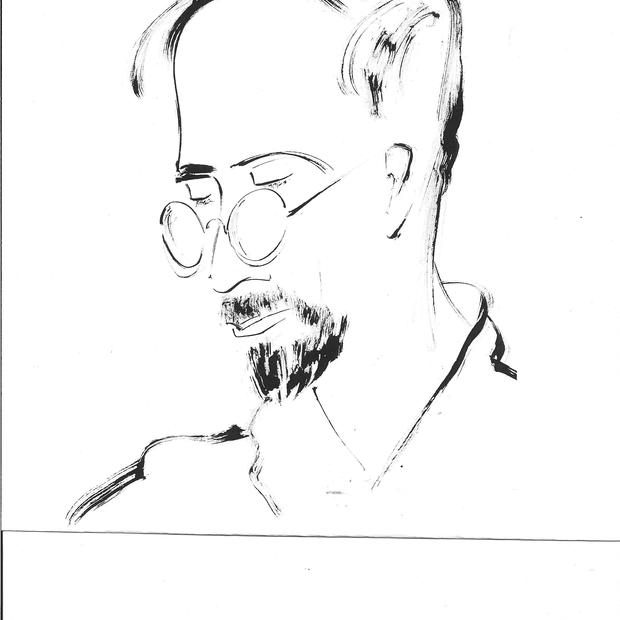Whenever I find myself growing grim about the mouth, whenever it is a damp, drizzly November or a sweltering dog bark- and firework-afflicted July in Southeast Seattle, whenever I find myself cursing the Rainier Avenue traffic and dreading another descent into the hell that is Lowe’s for lack of a real hardware store, and especially whenever only a strong moral principle prevents me from methodically knocking hipsters' pork pie hats off — then I account it high time to get to the Royal Room.
What goes on at Columbia City's "restaurant, bar, and project room" might have been news when I first intended to write about it, more than two years ago. But I shirked doing so, preferring at first to remain an anonymous ear in the crowd. Then it wasn’t news anymore. Now, however, something happening at the Royal Room tomorrow (Saturday— more about it anon) gives occasion to revisit its history. First, a little background.
Since it opened in December 2011, this establishment — commonly called a jazz club, though it’s much more — has become a musical crossroads like none other in Seattle and perhaps anywhere else since the downtown New York scene of the 1970s and ’80s. Its location itself a crossroads: 5000 Rainier Ave. S., the near-perfect center of the Rainier Valley, in the gentrifying cultural mixing chamber known as Columbia City.
The Royal Room inherits one legacy from its landlord, the Royal Esquire Club, Seattle's classic black nightclub (with the most nattily dressed clientele in the city). Its co-owners bring their own legacies: Tia Matthies and Steve Freeborn, who run the nightly operation, including a pretty good restaurant and bar, formerly operated the OK Hotel and Rendezvous. Wayne Horvitz, the protean and prolific composer/keyboardist who is its musical demiurge and chief booker, was at the center of that downtown New York scene — the first booker at the Knitting Factory, in fact.
Horvitz (below) transplanted himself to Seattle 26 years ago and became a passionate Southeast Seattleite (once you make it your neighborhood, it becomes your cause). But he conceived the Royal Room as, in his words, “a place like ones I knew in New York. When I first moved there you’d go to hear all different kinds of music, and communities, mixing it up.” Seattle has many venues for many genres, but limited crossover and much less cross-collaboration and fertilization. Tula’s, the Tractor, Re-bar and the rest do what they do, and rarely the mix shall meet.
 The Royal Room’s calendar (seven nights a week, excepting the occasional private party) finds room for everything from classic and progressive jazz to salsa and soul, funk and blues, Afrobeat and oud, bluegrass and rockabilly, Brazilian samba and (especially hot of late) chorro, occasional chamber music, the inevitable singer-songwriters, and even the odd irksome ’60s happening. Plus tribute nights to the likes of George Harrison, Thelonious Monk, Leon Russell, Keith Jarrett, Woody Guthrie, “the Disney Songbook” — you get the idea.
The Royal Room’s calendar (seven nights a week, excepting the occasional private party) finds room for everything from classic and progressive jazz to salsa and soul, funk and blues, Afrobeat and oud, bluegrass and rockabilly, Brazilian samba and (especially hot of late) chorro, occasional chamber music, the inevitable singer-songwriters, and even the odd irksome ’60s happening. Plus tribute nights to the likes of George Harrison, Thelonious Monk, Leon Russell, Keith Jarrett, Woody Guthrie, “the Disney Songbook” — you get the idea.
What makes such eclecticism possible is the Royal Room’s unusual pay scheme: no cover charge, except for name acts, usually touring, that are sure to draw. Everyone else, including Horvitz's groups, depends on church-style pay envelopes and teasing reminders from the stage to make a (rather modest) suggested donation of $5 to $15. (I like to pay by the set, as at the old Preservation Hall.) This lets curious rookie listeners and chance drop-ins sample and flee, or maybe stay and discover aural capacities they never knew they had. It may make the players work harder, but it also lets them try new things and return more often without fearing they’ll exhaust their audiences.
How does this honor system work in practice? “It really depends on the type of audience,” says Horvitz. “Listening audiences are very good about paying. Dancing audiences are sometimes good, sometimes less so.” Maybe they’re distracted by the sweat and hormones.
And then there are Horvitz’s own current bands (he’s had others): Electric Circus, Zony Mash, Sweeter Than the Day and Pigpen, playing various permutations and amalgamations of rock, soul, progressive jazz and psychedelia in various electric and acoustic combinations. And, the heart of the matter, the multi-instrumental Royal Room Collective Music Ensemble, which plays his own richly textured and syncretic (as much classically as jazz-tinged) compositions. Horvitz leads the ensemble in a technique developed by his old New York friend and mentor Butch Morris called “conduction.” It might crudely be described as “conducted improvisation.” You have to see and hear it.
Last year, Horvitz took conduction back to its source. He led the ensemble in a weeklong New York gig that was at once the Return of the Native and Seattle Takes Manhattan. The New York Times’ Ben Raitliff loved it.
Horvitz calls the Royal Room a “project room” rather than club, and it certainly is for him. Fifteen nights a year — Mondays, when the programming is most experimental and the crowd inevitably smallest — he can work out his projects with full stage sound and an audience, though it’s sometimes outnumbered by the players. “It allows me to think of things two months ahead instead of two years ahead,” he says.
One project, however, has been years in the making, he led it in the debut of what might become a lifelong opus ("I could play with this stuff till the day I die," he says.) Its title, 55: Music and Dance in Concrete, refers to the year Horvitz was born and his age when he conceived the project — double nickel, the new midlife milestone. He envisioned using a quintet and various fractions — solo, duo, trio — to perform it. Add up all the combos and you get 11. Eleven times the five of the original quintet equals … 55. The coincidences seemed too strong to pass up. Douglas Adams found the secret of the universe in 42. Horvitz had 55.
Horvitz hadn’t previously favored Cage-style numerically structured composition, but he found the artificial limitation liberating, as do poets who write haiku or sonnets. He wrote 55 brief chamber pieces and conducted 55 improvisations, recorded in various underground bunkers and a giant cistern at Fort Worden in Port Townsend. Those chambers had fascinated him for two decades; they provided both 55’s original inspiration and essential sonic qualities. The cistern, in his words, “features a 45-second reverberation time, one of the longest known natural reverb times of any interior space.”
The resulting production premiered at Fort Worden in April 2013, complete with dancers (the Yohei Saito troupe from Japan) and elaborate multimedia visuals by Yukio Suzuki filling the underground chambers. Horvitz, Saito and Suzuki reprised it at Arizona State University a few months later. Before all that, however, they tried out 55 at the Royal Room, in September 2012. I was there, and I can only guess what the later premiere was like, because that run-through seemed fully formed — richly layered structurally, harmonically, and visually, by turns playful, fierce, and meditative, and hypnotic throughout.
Now Horvitz and friends are reprising — or rather “remixing” (“It’s different every time”) — a portion of 55 to mark its release on LP and CD, at the Royal Room tomorrow, July 5. Robin Holcomb, the gifted composer, singer and pianist who’s married to Horvitz, will open the evening. And Electric Circus will dance it to a close. It’s a night not to miss, and I don’t care if the place gets packed. I’ve reserved a table.
Wayne Horvitz photo courtesy of www.kalvos.org.
The Royal Room, 5000 Rainier Ave. S., Seattle, (206) 906-9920 (206) 906-9920
(206) 906-9920
Saturday, June 5
8:30pm: Robin Holcomb/Peggy Lee Duo
9:15pm: 55: Music and Dance in Concrete_Live Re-mix
10:30pm: Electric Circus
Send SMS
Add to Skype
You'll need Skype CreditFree via Skype


